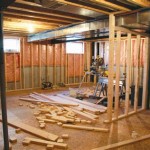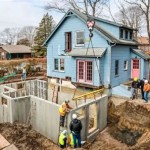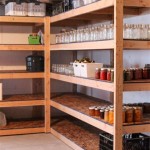Safe Levels of Radon in Basements
Radon is a naturally occurring radioactive gas that can seep into homes from the ground and accumulate in basements. While radon is present in all homes to some extent, it is important to maintain safe levels to protect the health of your family and yourself.
The Environmental Protection Agency (EPA) recommends that the maximum safe level of radon in a home is 4 picocuries per liter of air (pCi/L). Basements are particularly prone to radon accumulation due to their lower levels and proximity to the ground. Therefore, it is essential to regularly test basements for radon gas and take appropriate mitigation measures if necessary.
Here are some key aspects to consider regarding safe levels of radon in basements:
Testing for Radon
The first step towards ensuring safe radon levels in your basement is to test for its presence. Radon testing kits are widely available and can provide a reliable measurement of radon concentrations in your home.
The EPA recommends long-term radon testing over a period of several months to account for seasonal variations. Short-term tests can also be useful for quick screening, but they may not provide a complete picture of radon levels throughout the year.
Mitigation Measures
If radon levels in your basement exceed the recommended limit, it is crucial to implement mitigation measures to reduce radon gas concentrations to a safe level.
Some common radon mitigation techniques include:
Health Effects of Radon
Radon is the second leading cause of lung cancer in the United States, after smoking. Long-term exposure to elevated radon levels can increase the risk of developing lung cancer, especially for smokers.
The health risks associated with radon exposure are cumulative, meaning that the longer you are exposed to elevated levels, the greater your risk of developing lung cancer.
Protecting Your Family
Protecting your family from the health risks associated with radon exposure is essential. By following these guidelines, you can ensure that your basement has safe levels of radon gas:
By following these steps, you can create a safe and healthy environment for your family and reduce the risk of radon-related health issues.

Radon Levels What They Mean Level Is Safe

Are Your Radon Levels Safe Free Test Utah Services

The Air Report Radon 2024 Edition

Radon Levels Radonresources Com

Guide For Radon Measurements In Residential Dwellings Homes Ca

Radon Levels In New York Contractor Tests Syracuse Binghamton Utica

What Is Radon Testing And A Safe Level

Understanding Radon Levels And Health Risks

Radon

Guide For Radon Measurements In Residential Dwellings Homes Ca
Related Posts







